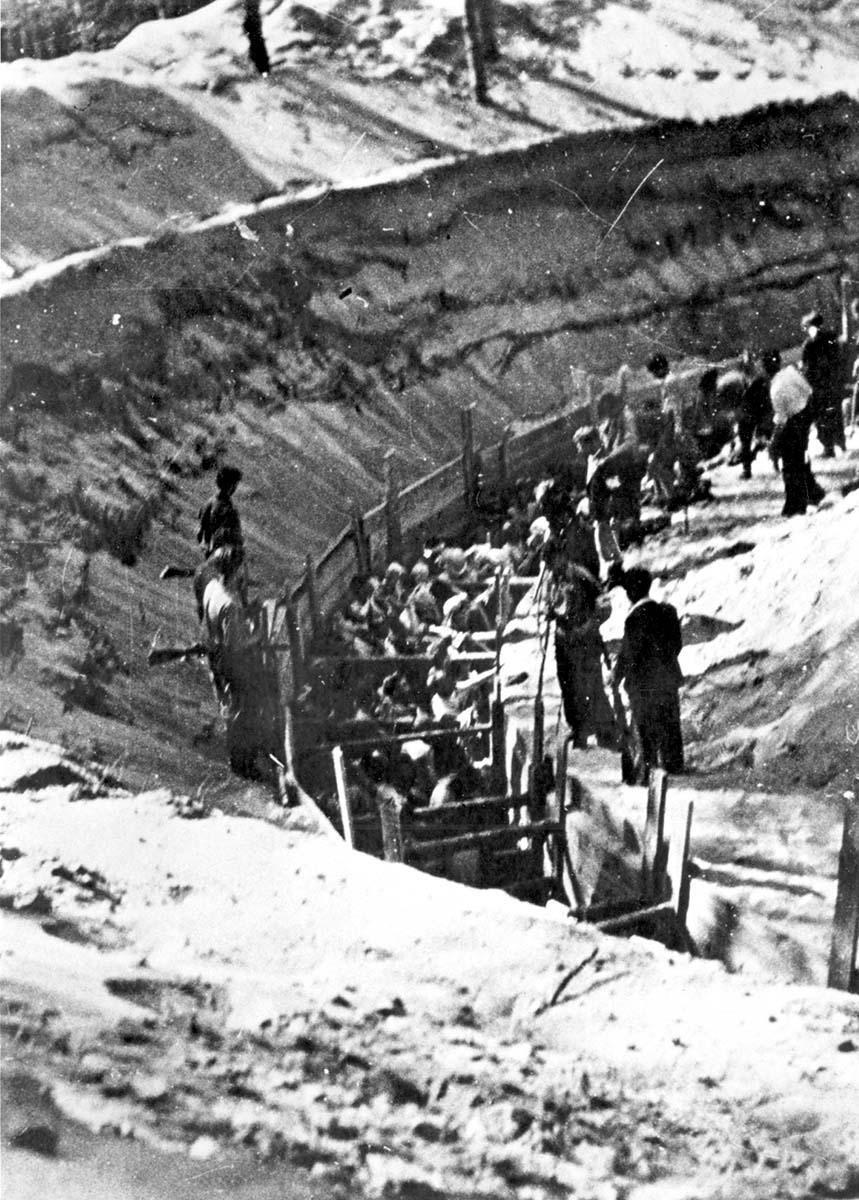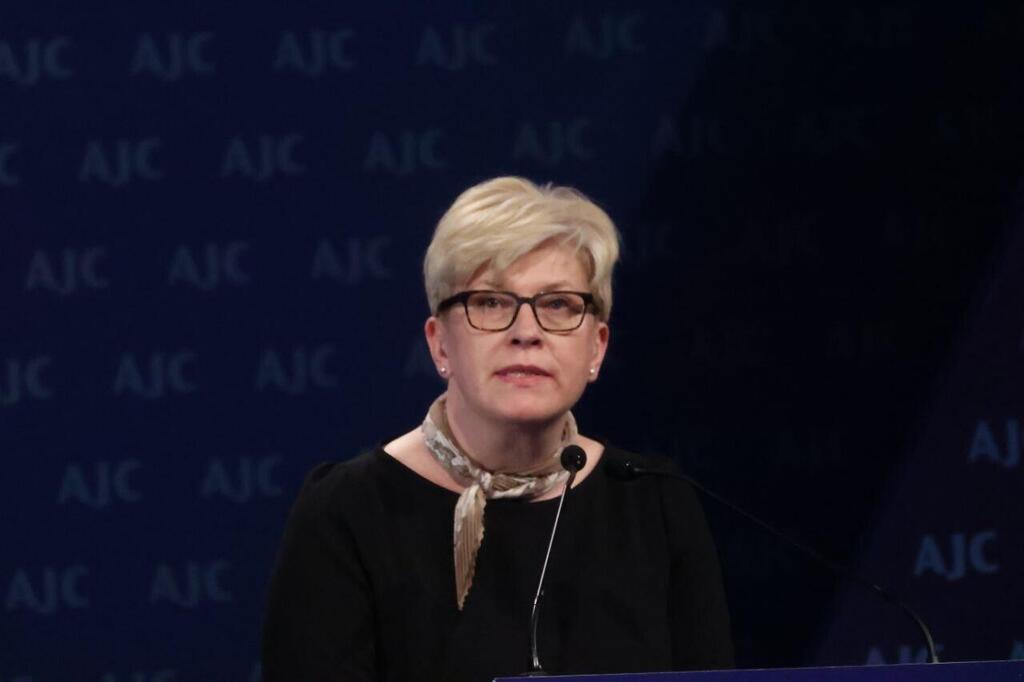(Testimony of Ponary massacre Dina Baitler)
Marking the National Memorial Day for the Genocide of Lithuanian Jews, the Prime Minister of Lithuania, Ingrida Šimonytė along with other senior Lithuanian Government officials and the International Commission for the investigation of the Nazis crimes in Lithuania, members and leaders of the Lithuanian Jewish community, and Holocaust education and commemoration organization embark on the International March of the Living, in a symbolic march from the site of the Jewish Ghetto in Vilnius, to the mass grave on the Paneriai (formerly Ponary) suburb of the city.
More stories:
The Ponary massacre, was the mass murder of up to 100,000 people, mostly Jews, Poles, and Russians, by Nazis and their Lithuanian collaborators. The murders took place between July 1941 and August 1944 near the railway station at Ponary, a suburb of today's Vilnius. Around 70,000 Jews were murdered at Ponary, along with up to 20,000 Poles, and 8,000 Soviet POWs, most of them from nearby Vilnius, and its newly formed Vilna Ghetto.
“The International March of the Living holds marches throughout Europe throughout the year, on national days such as Holocaust Remembrance Day, often marking the day on which Jews were carried away to the extermination camps, or to the woods to be murdered in mass graves. The Ponary Massacre was one of the cruelest mass killings of those dark days, and our annual march serves as a memorial to the Jews who once lived there and had their lives brutally cut short. It also serves as a reminder to us all that antisemitism and hatred still persist, and we must always boldly proclaim, Never Means Never," said Michel Gourary, Director of the European March of the Living," a statement from the organizers read.
"What happened is not just a tragedy of the Jewish people, it is a tragedy of all the peoples who lived then and live now in Lithuania – it is a tragedy of the whole world. However, such catastrophes can happen again – outbreaks of violence and incitement to hatred have not gone away," Lithuania Prime Minister Ingrida Šimonytė said in 2022.
The Nazis began the Aktion (German codename for actions leading to the mass killing) in July of 1941. Before the end of 1941, the bulk of the Jews of the Vilnius ghettos were wiped out, estimated at around 50,000 Jews. On October 21, Ghetto II was liquidated and thousands were murdered in Ghetto I before the end of October.
"Don't let them take you! Escape into the streets!" there was chaos; women lay down in the road, the elderly stood petrified and the youngsters fled.
In Kazimierz Sakowicz, Ponary Diary, 1941-1943: A Bystander’s Account of a Mass Murder, he chronicled most of the Ponary massacre killings and depicts the cruelty of the Nazis and their around 80 Lithuanian collaborators:
"11th July (1941). Lovely weather. It's hot out; there are white clouds and a gentle breeze. Shooting can be heard from the forest. Presumably from training. The shooting started at 4 pm. Then I was informed that many Jews were transported to the forest via the road to Grodno and were then shot. This was the first day of executions. A depressing feeling. The shooting stopped at about eight in the evening.
For the Germans, 300 Jews are 300 enemies of humanity. For the Lithuanians 300 Jews are 300 pairs of shoes, trousers and clothes."
5 View gallery
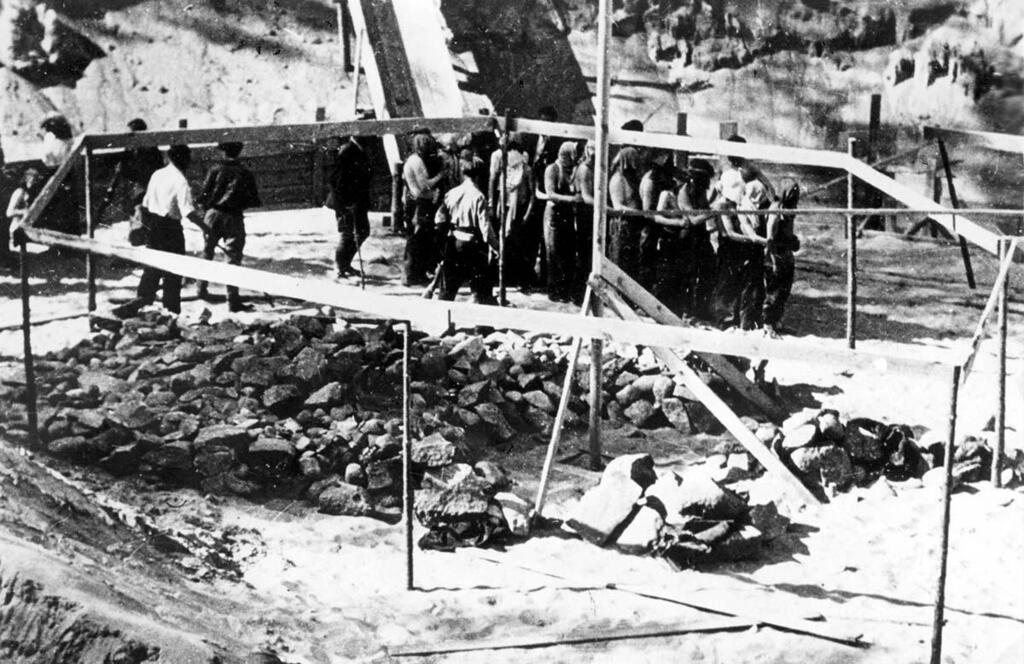

Jews with their heads covered being taken to the murder site at Ponary by members of the Lithuanian militia, 1941
(Yad Vashem)
On September 15, 1941, the Ghetto Police announced that anyone in the ghetto who did not have a work certificate in Ghetto I should move to Ghetto II that very evening. About 3,000 people presented themselves at the gate. Only 600 were resettled to Ghetto II. The others were taken to the Lukiszki prison and to Ponary and were murdered. Even following this Aktion, the elderly and sick were resettled from Ghetto I to Ghetto II and simultaneously, work certificate holders were resettled from Ghetto II to Ghetto I.
Yom Kippur Aktion
On Yom Kippur, October 1, 1941, Aktionen took place in both ghettos. At noon, when the synagogues were full, Germans and Lithuanians under the command of the SS the commander, Schweinberger entered Ghetto II, rounded up approximately 1,700 Jews and deported them to Lukiszki. In the afternoon Schweinberger turned to the Judenrat of Ghetto I and demanded 1,000 Jews by 19:30 that evening.
5 View gallery
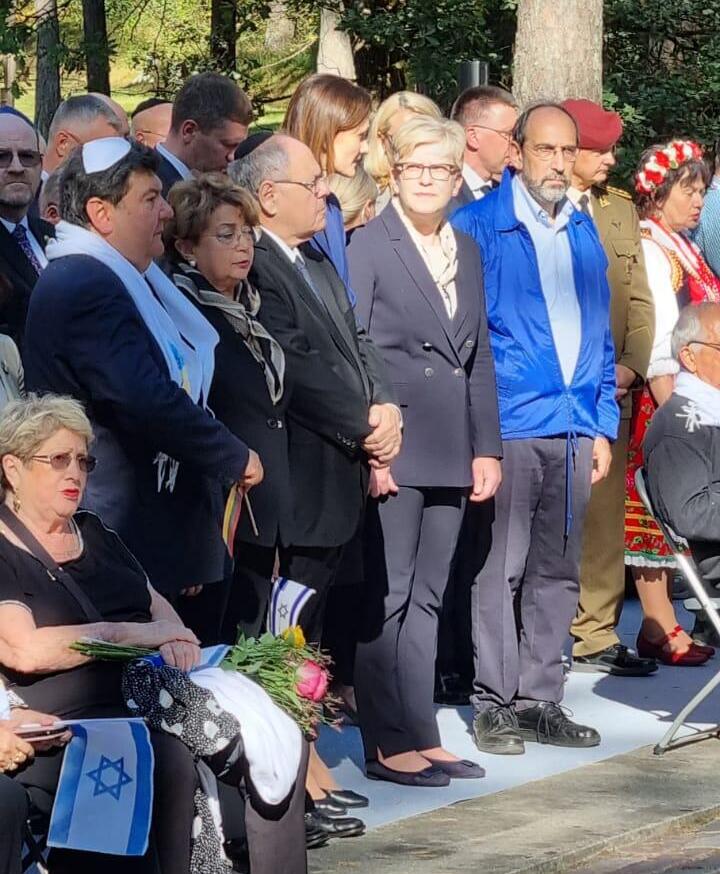

Ponar march: Prime Minister of Lithuania, Ingrida Šimonytė along with other senior Lithuanian Government officials and the International Commission
(Photo: MOTL)
When the Jews were not delivered to them, the Germans and Lithuanians entered the ghetto and began taking people from their homes. Work certificate holders and their families presented themselves at the gate with a sense that they were protected from deportation. The majority of those who did not have work certificates hid. 2,200 people presented themselves at the gate and were taken to Lukiszki, among them work certificate holders. According to various sources up to 800 people were freed from Lukiszki by the German units and institutions that employed them. There were also Jews who were freed in exchange for bribes paid to the Germans and Lithuanians. The Yom Kippur Aktion increased the fear and uncertainty in the ghetto. It became clear that the "golden" work certificate did not buy safety for its holder.
Liquidation of Ghetto II
In October 1941 three Aktionen were carried out in Ghetto II. During the first Aktion the Jews were told that they were being taken to a third ghetto where there was a shortage of workers. When people saw that they were being taken in the direction of Lukiszki they lay down in the street and refused to move.
Jews recorded acts that led to the mass killings:
"On the way to the prison Moshe Frumkin, a youth of 18, called to the people that were being transported with him, "Don't let them take you! Escape into the streets!" there was chaos; women lay down in the road, the elderly stood petrified and the youngsters fled. Schweinberger gave the order to shoot. Dozens of people were killed and those who remained alive were forced to carry them. Even so, many escaped."
A. Sutzkever, Vilna Ghetto, p. 50
5 View gallery
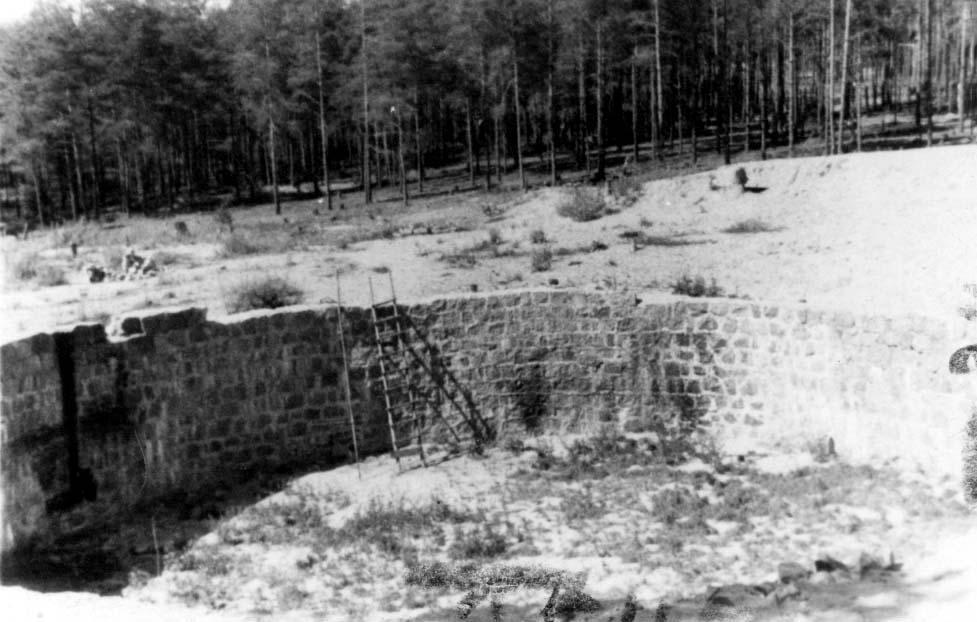

One of the pits at Ponary originally prepared for fuel storage, but which was used for the murder of Jews from Vilna and the surrounding area
(Yad Vashem)
The second Aktion took place on Shmini Atseret and Simchat Torah (the last two days of the holiday of Succot). Despite the previous Aktion and the fact that the elderly and sick had been transferred from Ghetto I to Ghetto II, there was still no sense among the Jews that the end of the ghetto was near. People still left the ghetto to go to work every day. According to Jewish sources about 3,000 people were taken from the ghetto to Ponary in this Aktion. In the third Aktion, on the 21st of October, about 2,500 Jews were deported to Ponary and murdered. Thus Ghetto II was liquidated.
Lithuanian Jewry consisted of approximately 200,000 Jews before the Holocaust, with 70,000 living in the capital city of Vilnius, where the main ghetto was built. The Nazis nearly obliterated the Jewish community in Lithuania in the Summer and Autumn of 1941 in what is called “Holocaust by Bullets,” when Nazis shot the Jews of Eastern Europe and buried them in mass graves. Over 200 Jewish communities were obliterated in Lithuania alone. Ponary marks one of the most prominent symbols of the Holocaust, for Eastern European Jews and in general.


